30+ Found Poem Examples
Poetry, as a versatile literary form, captivates readers with its ability to convey emotions, themes, and ideas through carefully chosen words. Found poetry, a fascinating genre within the realm of creative expression, takes this art to another level by crafting poetic gems from existing texts. In this article, we will explore the world of found poem examples, delve into the process of crafting them, and answer common questions surrounding this unique form of literary creation.
1. Creating Found Poem Example
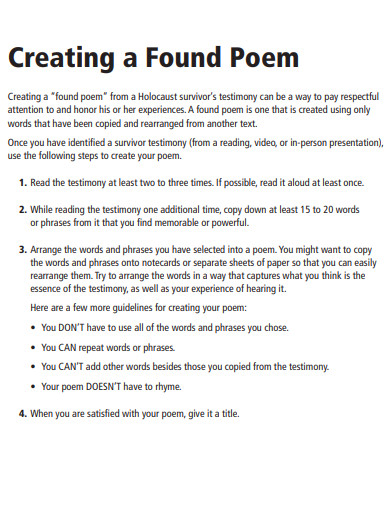
portlandartmuseum.org
2. Found Poem Example
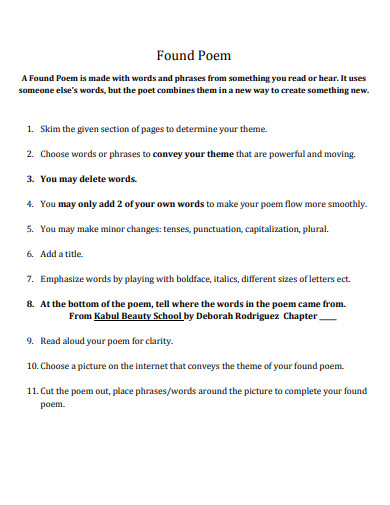
ny24000991.schoolwires.net
3. Found Poem Instructions Example
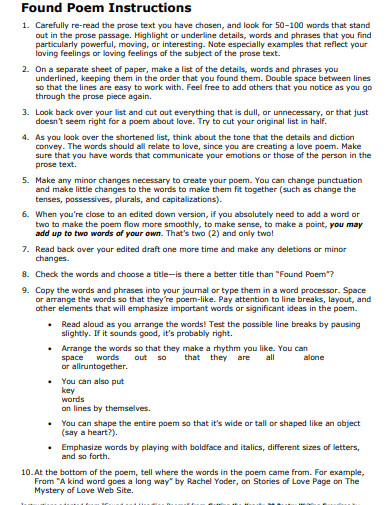
readwritethink.org
4. Found And Headline Poem Example
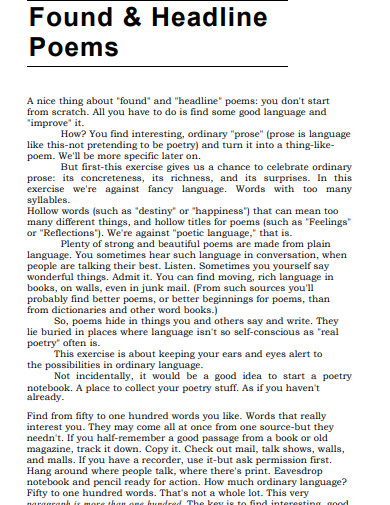
static01.nyt.com
5. Found Poem Exercise Example
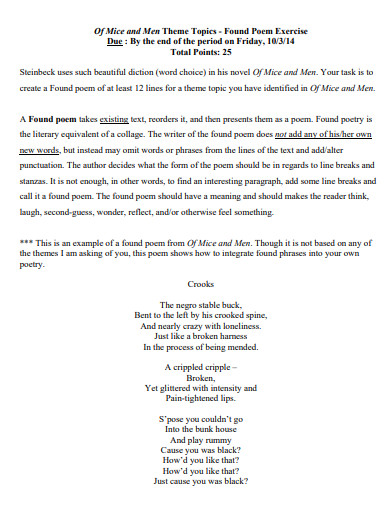
npsd.k12.nj.us
6. Found Poem Format
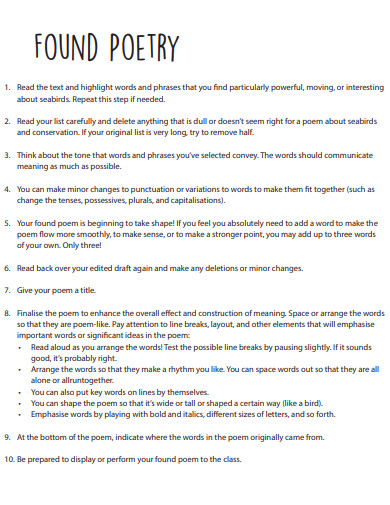
prod-media.coolaustralia.org
7. Sample Found Poem Example
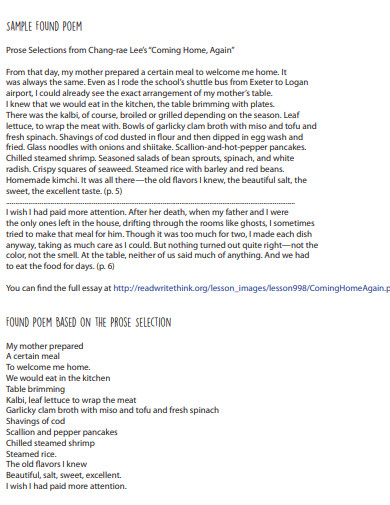
prod-media.coolaustralia.org
8. Found Poem Final Evaluation Example
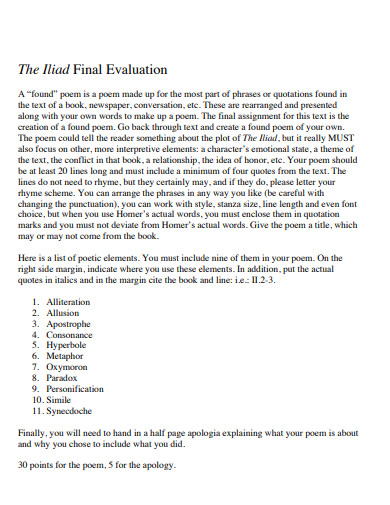
scasd.org
9. Composers of Found Poem Example

etd.ohiolink.edu
10. Found Poem Handout Example

concordmuseum.org
11. Middle School Found Poem Example
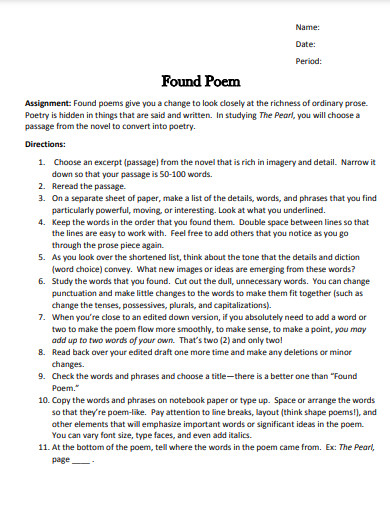
mrsdottarar.files.wordpress.com
12. Graduate School Found Poem Example
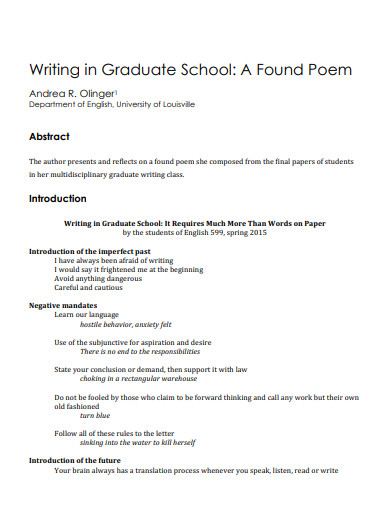
ir.library.louisville.edu
13. Love Found Poem Example

scholarworks.gvsu.edu
14. Creative Found Poem Example
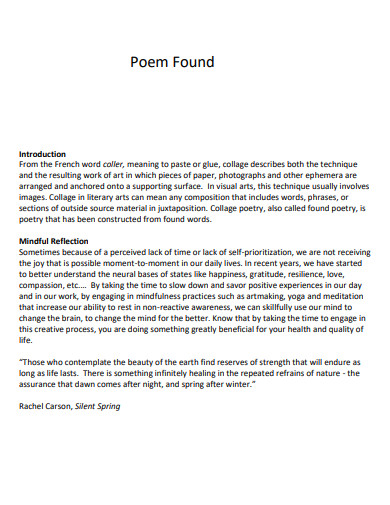
artsinmedicine.ufhealth.org
15. Found Poem Project Example
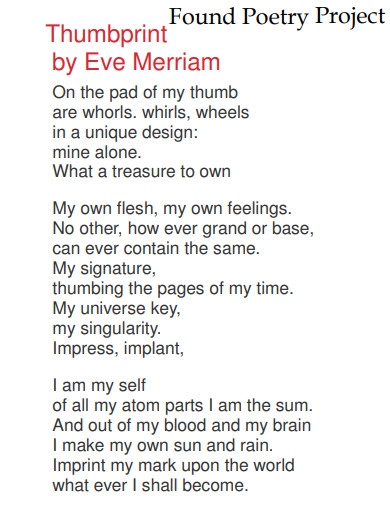
cdschools.org
16. Original Found Poem Example
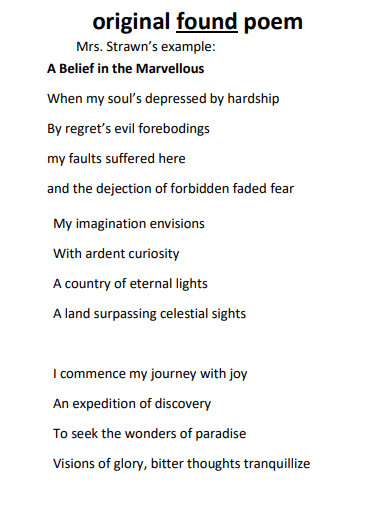
ouallinator.com
17. University Found Poem Example

nsuworks.nova.edu
18. Found Poem Grading Rubric Example
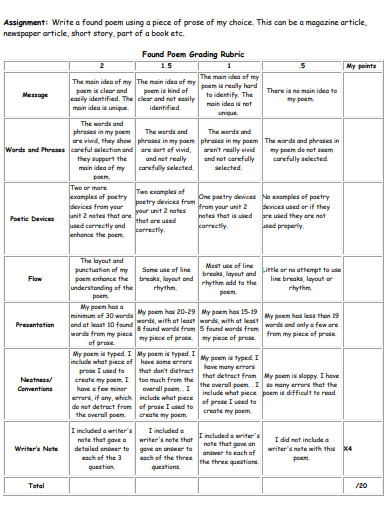
washington.dbqschools.org
19. Found Poem Song Example

louisianavoices.org
20. Student Found Poem Example
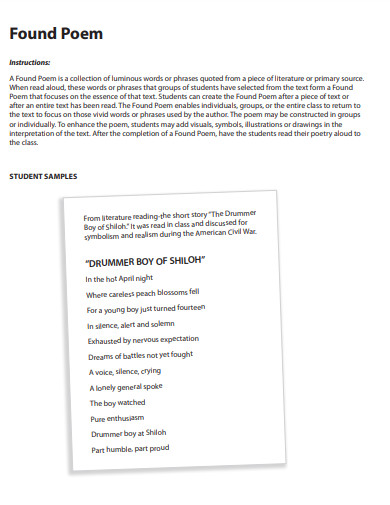
goodwinapush.files.wordpress.com
21. Found Poem Activity Example
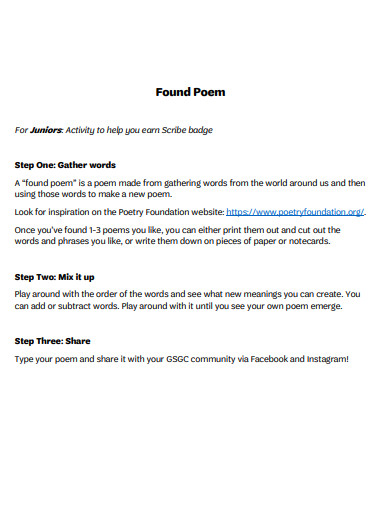
girlscouts-gateway.org
22. Found Poem Worksheet Example
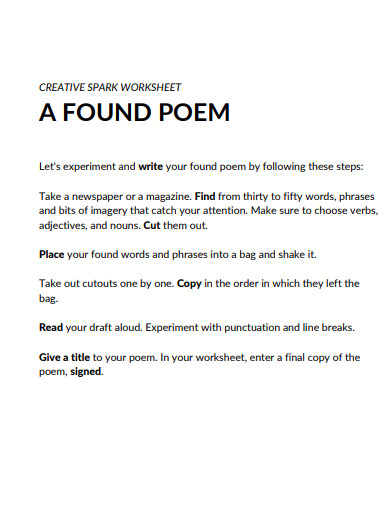
static1.squarespace.com
23. Short Found Poem Example
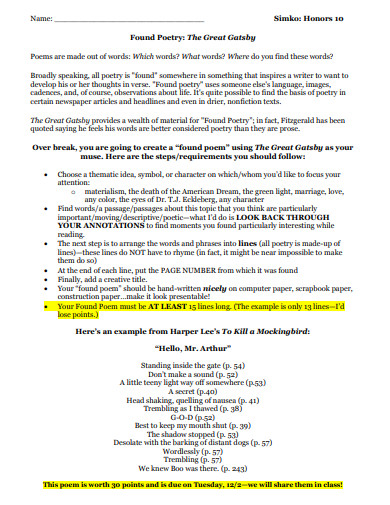
tri-valley.k12.oh.us
24. Found Poem Dos Example
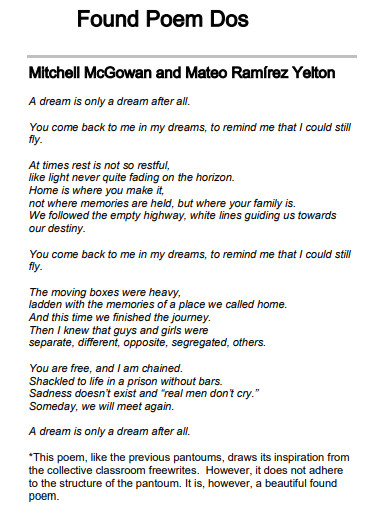
digitalcommons.humboldt.edu
25. Found Poem Construction Example
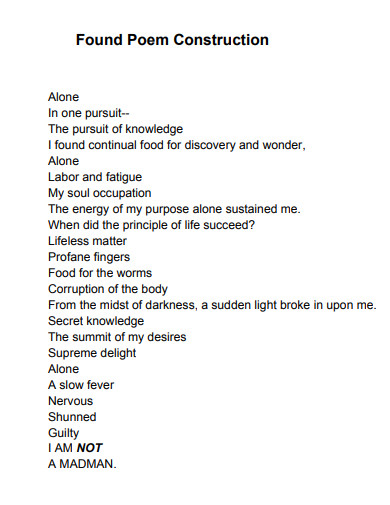
shsdavisapes.pbworks.com
26. Found iPod Poem Example
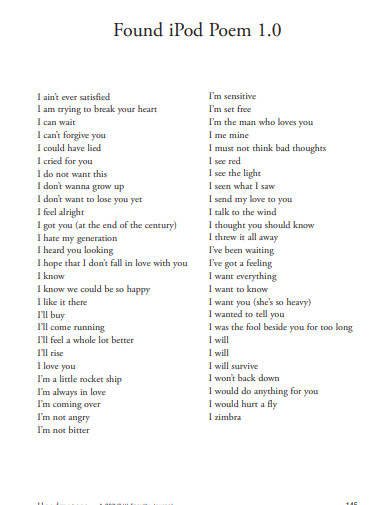
digitalcommons.csbsju.edu
27. Simple Found Poem Example
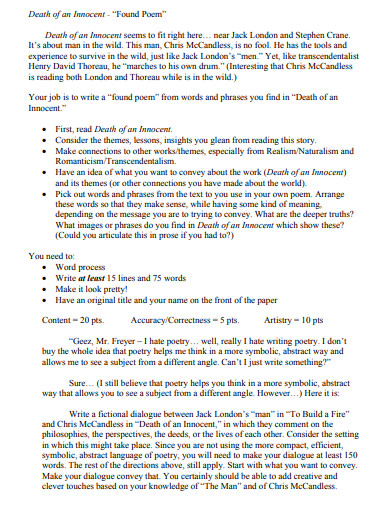
wlwv.k12.or.us
28. Basic Found Poem Example
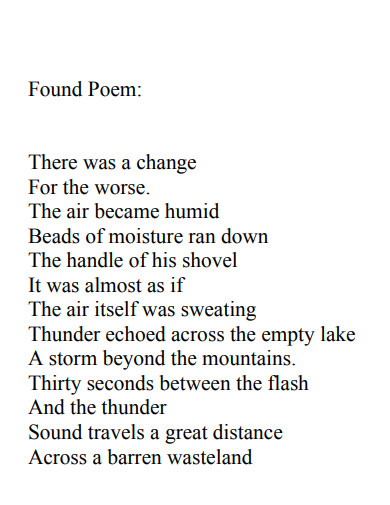
historytech.files.wordpress.com
29. Found Poem Template

digitalcommons.law.seattleu.edu
30. General Found Poem Example
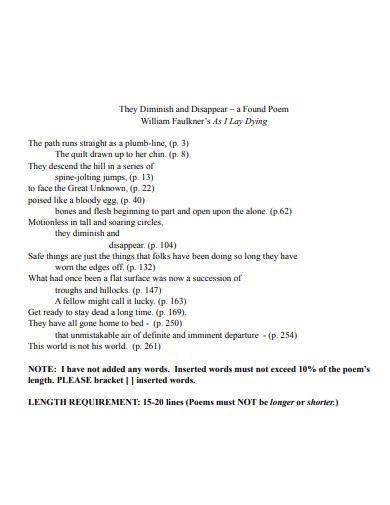
rcboe.org
31. Found Poem Assignment Example
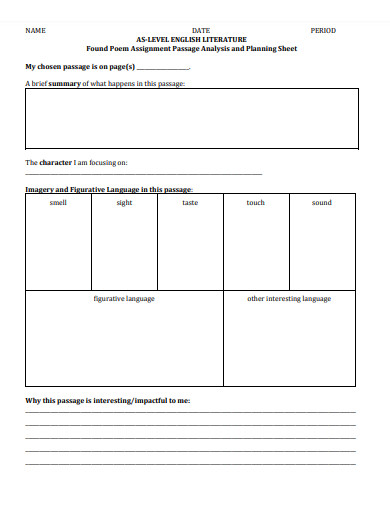
ayapasuprep.weebly.com
What is Found Poetry?
Found poetry, also known as blackout or erasure poetry, is a creative practice that involves discovering poetry within pre-existing texts. Poets select a source text – it could be anything from a newspaper article to a page from a novel – and highlight or blackout certain words and phrases to form a new, original poem. The resulting poem is a collage of language, reshaped to evoke new meanings, emotions, and imagery.
How to Write a Found Poem
Creating a found poem is akin to excavating hidden beauty from plain landscapes. It invites you to reimagine the words, tones, and themes of an existing text, transforming it into a fresh, poetic masterpiece. Here’s a step-by-step guide to help you embark on your found poetry journey.
Step 1: Selecting Your Source Text
Begin by choosing a source text that resonates with you. It could be a newspaper article, a novel page, or any piece of writing that sparks your creativity. Consider the tone, theme, and context of the text, as these elements will shape the direction of your found poem.
Step 2: Identifying Key Elements
Read through the source text and identify key words, phrases, and lines that stand out to you. Look for potential themes, emotions, or narratives that you wish to convey in your found poem. This process involves both analysis and intuition.
Step 3: Sculpting Your Poem
Using a pen or digital tool, start marking or blacking out the words you’ve selected from the source text. These words will become the building blocks of your found poem. Experiment with arrangement, spacing, and line breaks to create a visually striking and emotionally resonant composition.
Step 4: Refining the Composition
Once you’ve crafted your initial version, step back and review your found poem. Polish the language, ensuring that the poem flows smoothly and maintains a consistent tone. Consider incorporating literary devices like alliteration and metaphors to enhance the poetic impact.
FAQs
Can I use any text for found poetry?
Absolutely! Any text can serve as a source for found poetry – from a novel to a restaurant menu. The key is to extract new meanings from the existing words.
Is found poetry the same as plagiarism?
No, found poetry is a form of artistic expression. While you’re using existing text, the act of selecting, reimagining, and arranging the words creates a new and unique work.
How do I know if my found poem is successful?
A successfully found poem resonates emotionally, conveys a clear theme, and maintains a coherent tone. If it captures your intended message and captivates your audience, you’ve achieved your goal.
Found poetry exemplifies the transformative power of creativity, offering a new perspective on language and literature. Through careful selection and arrangement of words, poets can construct profound compositions from the mundane. So, whether you’re a seasoned poet or just dipping your toes into the world of verse, exploring found poem examples can be a captivating journey of artistry and self-expression.


